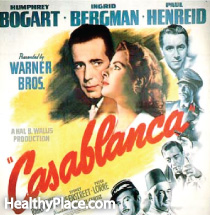 Practical experience shows that nothing will so much insure immunity from drinking as intensive work with other alcoholics. It works when other activities fail. This is our Twelfth Suggestion: Carry this message to other alcoholics! You can help when no one else can. You can secure their confidence when others fail. Remember they are very ill.
Practical experience shows that nothing will so much insure immunity from drinking as intensive work with other alcoholics. It works when other activities fail. This is our Twelfth Suggestion: Carry this message to other alcoholics! You can help when no one else can. You can secure their confidence when others fail. Remember they are very ill.
Life will take on new meaning. To watch people recover, to see them help others, to watch loneliness vanish, to see a fellowship grow up about you, to have a host of friends this is an experience you must not miss. We know you will not want to miss it. Frequent contact with newcomers and with each other is the bright spot of our lives.
Perhaps you are not acquainted with any drinkers who want to recover. You can easily find some by asking a few doctors, ministers, priests, or hospitals. They will be only too glad to assist you. Don't start out as an evangelist or a reformer. Unfortunately a lot of prejudice exists. You will be handicapped if you arouse it. Ministers and doctors are competent and you can learn much from them if you wish, but it happens that because of your own drinking experience you can be uniquely useful to other alcoholics. So cooperate; never criticize. To be helpful is our only aim.
When you discover a prospect for Alcoholics Anonymous, find out all you can about him. If he does not want to stop drinking, don't waste time trying to persuade him. You may spoil a later opportunity. This advice is given for his family also. They should be patient, realizing they are dealing with a sick person.
If there is any indication that he wants to stop, have a good talk with the person most interested in him usually his wife. Get an idea of his behavior, his problems, his background, the seriousness of his condition, and his religious leanings. You need to know this information to put yourself in his place, to see how you would like him to approach you if the tables were turned.
Sometimes it is wise to wait till he goes on a binge. The family may object to this, but unless he is in a dangerous physical condition, it is better to risk it. Don't deal with him when he is very drunk, unless he is ugly and the family needs your help. Wait for the end of the spree, or at least for a lucid interval. Then let his family or a friend ask him if he wants to quit for good and if he would go to any extreme to do so. If he says yes, then his attention should be drawn to you as a person who has recovered. You should be described to him as one of a fellowship who, as part of their own recovery, try to help others and who will be glad to talk to him if he cares to see you.
If he does not want to see you, never force yourself upon him. Neither should the family hysterically plead with him to do anything, nor should they tell him much about you. They should wait for the end of his next drinking bout. You might place this book where he can see it in the interval. Here no specific rule can be given. The family must decide these things. But urge them not to be overanxious, for that might spoil matters.
Usually the family should not try to tell your story. When possible, avoid meeting a man through his family. Approach through a doctor or an institution is a better bet. If your man needs hospitalization, he should have it, but not forcibly unless he is violent. Let the doctor, if he will, tell him he has something in the way of a solution.
When your man is better, the doctor might suggest a visit from you. Though you have talked with the family, leave them out of the first discussion. Under these conditions your prospect will see he is under no pressure. He will feel he can deal with you without being nagged by his family. Call on him while he is still jittery. He may be more receptive when depressed.
See your man alone, if possible. At first engage in general conversation. After a while, turn the talk to some phase of drinking. Tell him enough about your drinking habits, symptoms, and experiences to encourage him to speak of himself. If he wishes to talk, let him do so. You will thus get a better idea of how you ought to proceed. If he is not communicative, give him a sketch of your drinking career up to the time you quit. But say nothing at the moment of how that was accomplished. If he is in a serious mood, dwell on the troubles liquor has caused you, being careful not to moralize or lecture. If his mood is light, tell him humorous stories of y our escapades. Get him to tell some of his.
When he sees you know all about the drinking game, commence to describe yourself as an alcoholic. Tell him how baffled you were, how you finally learned that you were sick. Give him an account of the struggles you made to stop. Show him the mental twist which leads to the first drink of a spree. We suggest you do this as we have done it in the chapter on alcoholism. If he is alcoholic, he will understand you at once. He will match your mental inconsistencies with some of his own.
If you are satisfied that he is a real alcoholic, begin to dwell on the hopeless feature of the malady. Show him, from your own experience, how the queer mental condition surrounding that first drink prevents normal functioning of the will power. Don't, at this stage, refer to this book, unless he has seen it and wishes to discuss it. And be careful not to brand him as an alcoholic. Let him draw his own conclusion. If he sticks to the idea that he can still control his drinking, tell him that possibly he can if he is not too alcoholic. But insist that if he is severely afflicted, there may be little chance he can recover by himself.
Continue to speak of alcoholism as an illness, a fatal malady. Talk about the conditions of body and mind which accompany it. Keep his attention focused mainly on your personal experience. Explain that many are doomed who never realize their predicament. Doctors are rightly loath to tell alcoholic patients the whole story unless it will serve some good purpose. But you may talk to him about the hopelessness of alcoholism because you offer a solution. You will soon have your friend admitting he has many, if not all, of the traits of the alcoholic. If his own doctor is willing to tell him he is alcoholic, so much the better. Even though your protégé may not have entirely admitted his condition, he has become very curious to know how you got well. Let him ask you that question, if he will. Tell him exactly what happened to you. Stress the spiritual feature freely. If the man be agnostic or atheist, make it emphatic that he does not have to agree with your conception of God. He can choose any conception he likes, provided it makes sense to him. The main thing is that he be willing to believe in a Power greater than himself and that he live by spiritual principles.
When dealing with such a person, you had better use everyday language to describe spiritual principles. There is no use arousing any prejudice he may have against certain theological terms and conceptions about which he may already be confused. Don't raise such issues, no matter what your own convictions are.
Your prospect may belong to a religious denomination. His religious education and training may be far superior to yours. In that case he is going to wonder how you can add anything to what he already knows. But he will be curious to learn why his own convictions have not worked and why yours seem to work so well. He may be an example of the truth that faith alone is insufficient. To be vital, faith must be accompanied by self sacrifice and unselfish, constructive action. Let him see that you are not there to instruct him in religion. Admit that he probably knows more about it than you do, but call to his attention the fact that however deep his faith and knowledge, he could not have applied it or he would not drink. Perhaps your story will help him see where he has failed to practice the very precepts he knows so well. We represent no particular faith or denomination. We are dealing only with general principles common to most denominations.
Outline the program of action, explaining how you made a self appraisal, how you straightened out your past and why you are now endeavoring to be helpful to him. It is important to him to realize that your attempt to pass this on to him plays a vital part in your own recovery. Actually, he may be helping you more than you are helping him. Make it plain he is under no obligation to you, that you hope only that he will try to help other alcoholics when he escapes his own difficulties. Suggest how important it is that he place the welfare of other people ahead of his own. Make it clear that he is under no pressure, that he needn't see you again if he doesn't want to. You should not be offended if he wants to call it off, for he has helped you more than you have helped him. If your talk has been sane, quiet and full of human understanding, you have perhaps made a friend. Maybe you have disturbed him about the question of alcoholism. This is all to the good. The more hopeless he feels, the better. He will be more likely to follow your suggestions.
Your candidate may give reasons why he need not follow all of the program. He may rebel at the thought of drastic housecleaning which requires discussion with other people. Do not contradict such views. Tell him you once felt as he does, but you doubt whether you would have made much progress had you not taken action. On your first visit, tell him about the Fellowship of Alcoholics Anonymous. If he shows interest, lend him your copy of this book.
Unless your friend wants to talk further about himself, do not wear out your welcome. Give him a chance to think it over. If you do stay, let him steer the conversation in any direction he likes. Sometimes a new man is anxious to proceed at once, and you may be tempted to let him do so. This is sometimes a mistake. If he has trouble later, he is likely to say you rushed him. You will be most successful with alcoholics if you do not exhibit any passion for crusade or reform. Never talk down to an alcoholic from any moral or spiritual hilltop; simply lay out the kit of spiritual tools for his inspection. Show him friendship and fellowship. Tell him that if he wants to get well you will do anything to help.
If he is not interested in your solution, if he expects you to act only as a banker for his financial difficulties or a nurse for his sprees, you may have to drop him until he changes his mind. This he may do after he gets hurt some more.
If he is sincerely interested and wants to see you again, ask him to read this book in the interval. After doing that, he must decide for himself whether he wants to go on. He should not be pushed or prodded by you, his wife, or his friends. If he is to find God, the desire must come from within.
If he thinks he can do the job in some other way, or prefers some other spiritual approach, encourage him to follow his own conscience. We have no monopoly on God; we merely have an approach that worked with us. But point out that we alcoholics have much in common and that you would like, in any case, to be friendly. Let it go at that.
Do not be discourage if your prospect does not respond at once. Search out another alcoholic and try again. You are sure to find someone desperate enough to accept with eagerness what you offer. We find it a waste of time to keep chasing a man who cannot or will not work with you. If you leave such a person alone, he may soon become convinced that he cannot recover by himself. To spend too much time on any one situation is to deny some other alcoholic an opportunity to live and be happy. One of our Fellowship failed entirely with his first half dozen prospects. He often says that if he had continued to work on them, he might have deprived many others, who have since recovered, of their chance.
Suppose now you are making your second visit to a man. He has read this volume and says he is prepared to go through with the Twelve Steps of the program of recovery. Having had the experience yourself, you can give him much practical advice. Let him know you are available if he wishes to make a decision and tell his story, but do not insist upon it if he prefers to consult someone else.
He may be broke and homeless. If he is, you might try to help him about getting a job, or give him a little financial assistance. But you should not deprive your family or creditors of money they should have. Perhaps you will take the man into your home for a few days. But be sure to use discretion. Be certain that he will be welcomed by our family, and that he is not trying to impose upon you for money, connections, or shelter. Permit that and you only harm him. You will be making it possible for him to be insincere. You may be aiding in his destruction rather than his recovery.
Never avoid these responsibilities, but be sure you are doing the right thing if you assume them. Helping others is the foundation stone of your recovery. A kindly act once in a while isn't enough. You have to act the Good Samaritan every day, if need be. It may mean the loss of many nights' sleep, great interference with your pleasures, interruptions to your business. It may mean sharing your money and your home, counseling frantic wives and relatives, innumerable trips to the police courts, sanitariums, hospitals, jails, and asylums. Your telephone may jangle at any time of the day or night. A drunk may smash the furniture in your home or burn a mattress. You may have to fight with him if he is violent. Sometimes you will have to call a doctor and administer sedatives under his direction. Another time you may have to send for the police or an ambulance. Occasionally you will have to meet such conditions.
We seldom allow an alcoholic to live in our homes for long at a time. It is not good for him, and it sometimes creates serious complications in a family.
Though an alcoholic does not respond, there is no reason why you should neglect his family. You should continue to be friendly to them. The family should be offered your way of life. Should they accept and practice spiritual principles, there is a much better chance that the head of the family will recover. And even though he continues to drink, the family will find life more bearable.
For the type of alcoholic who is able and willing to get well, little charity, in the ordinary sense of the word, is needed or wanted. The men who cry for money and shelter before conquering alcohol, are on the wrong track. Yet we do go to great extremes to provide each other with these very things, when such action is warranted. This may seem inconsistent, but we think it is not.
It is not the matter of giving that is in question, but when and how to give. That often makes the difference between failure and success. The minute we put our work on a service plane, the alcoholic commences to rely upon our assistance rather than upon God. He clamors for this or for that, claiming he cannot master alcohol until his material needs are cared for. Nonsense. Some of us have taken very hard knocks to learn this truth: Job or no job wife or no wife we simply do not stop drinking so long as we place dependence upon other people ahead of dependence on God.
Burn the idea into the consciousness of every man that he can get well regardless of anyone. The only condition is that he trust in God and clean house.
Now, the domestic problem: There may be divorce, separation, or just strained relations. When your prospect has made such preparation as he can to his family, and has thoroughly explained to them the new principles by which he is living, he should proceed to put these principles into action at home. That is, if he is lucky enough to have a home. Thought his family be at fault in many respects, he should not be concerned about that. He should concentrate on his own spiritual demonstration. Argument and faultfinding are to be avoided like the plague. In many homes this is a difficult thing to do, but it must be done if any results are to be expected. If persisted in for a few months, the effect on a man's family is sure to be great. The most incompatible people discover they have a basis upon which they can meet. Little by little the family may see their own defects and admit them. These can then be discussed in an atmosphere of helpfulness and friendliness.
After they have seen tangible results, the family will perhaps want to go along. These things will come to pass naturally and in good time provided, however, the alcoholic continues to demonstrate that he can be sober, considerate, and helpful, regardless of what anyone says or does. Of course, we all fall much below this standard many times. But we must try to repair the damage immediately lest we pay the penalty by a spree.
If there be divorce or separation, there should be no undue haste for the couple to get together. The man should be sure of his recovery. The wife should fully understand his new way of life. If their old relationship is to be resumed it must be on a better basis, since the former did not work. This means a new attitude and spirit all around. Sometimes it is to the best interests of all concerned that the couple remain apart. Obviously, no rule can be laid down. Let the alcoholic continue his program day by day. When the time for living together has come, it will be apparent to both parties.
Let no alcoholic say he cannot recover unless he has his family back. This just isn't so. In some cases the wife will never come back for one reason or another. Remind the prospect that his recovery is not dependent upon people. It is dependent upon his relationship with God. We have seen men get well whose families have not returned at all. We have seen others slip when the family came back too soon.
Both you and the new man must walk day by day in the path of spiritual progress. If you persist, remarkable things will happen. When we look back, we realize that the things which came to us when we put ourselves in God's hands were better than any thing we could have planned. Follow the dictates of a Higher Power and you will presently live in a new and wonderful world, no matter what your present circumstances.
When working with a man and his family, you should take care not to participate in their quarrels. You may spoil your chance of being helpful if you do. But urge upon a man's family that he has been a very sick person and should be treated accordingly. You should warn against arousing resentment of jealousy. You should point out that his defects of character are not going to disappear over night. Show them that he has entered upon a period of growth. Ask them to remember, when they are impatient, the blessed fact of his sobriety.
If you have been successful in solving your own domestic problems, tell the newcomer's family how that was accomplished. In this way you can set them on the right track without becoming critical of them. The story of how you and your wife settled your difficulties is worth any amount of criticism.
Assuming we are spiritually fit, we can do all sorts of things alcoholics are not supposed to do. People have said we must not go where liquor is served; we must not have it in our homes; we must shun friends who drink; we must avoid moving pictures which show drinking scenes; we must not to into bars; our friends must hide their bottles if we go to their houses; we mustn't think or be reminded about alcohol at all. Our experience shows this is not necessarily so.
We meet these conditions every day. An alcoholic who cannot meet them, still has an alcoholic mind; there is something the matter with his spiritual status. His only chance for sobriety would be some place like the Greenland Ice Cap, and even there an Eskimo might turn up with a bottle of scotch and ruin everything! Ask any woman who has sent her husband to distant places on the theory he would escape the alcohol problem.
In our belief any scheme of combating alcoholism which proposes to shield the sick man from temptation is doomed to failure. If the alcoholic tries to shield himself he may succeed for a time, but he usually winds up with a bigger explosion then ever. WE have tried these methods. These attempts to do the impossible have always failed.
So our rule is not to avoid a place where there is drinking, if we have a legitimate reason for being there. That includes bars, nightclubs, dances, receptions, weddings, even plain ordinary whoopee parties. To a person who has had experience with an alcoholic, this may seem like tempting Providence, but it isn't.
You will note that we made an important qualification. Therefore, ask yourself on each occasion, "Have I any good social, business, or personal reason for going to this place? Or am I expecting to steal a little vicarious pleasure from the atmosphere of such places?" If you answer these questions satisfactorily, you need have no apprehension. Go or stay away, whichever seems best. But be sure you are on solid spiritual ground before you start and that your motive in going is thoroughly good. Do not think of what you will get out of the occasion. Think of what you can bring to it. But if you are still shaky, you had better work with another alcoholic instead!
Why sit with a long face in places where there is drinking, sighing about the good old days. If it is a happy occasion, try to increase the pleasure of those there; if a business occasion, go and attend to your business enthusiastically. If you are with a person who wants to eat in a bar, by all means go along. Let your friends know they are not to change their habits on your account. At a proper time and place explain to all your friends why alcohol disagrees with you. If you do this thoroughly, few people will ask you to drink. While you were drinking, you were withdrawing from life little by little. Now you are getting back into the social life of this world. Don't start to withdraw again just because your friends drink liquor.
Your job now is to be at the place where you may be of maximum helpfulness to others, so never hesitate to go anywhere if you can be helpful. You should not hesitate to visit the most sordid spot on earth on such an errand. Keep on the firing line of life with those motives and God will keep you unharmed.
Many of us keep liquor in our homes. We often need it to carry green recruits through a severe hangover. Some of us still serve it to our friends provided they are not alcoholic. But some of us think we should not serve liquor to anyone. We never argue this question. We feel that each family, in the light of their own circumstance, ought to decide for themselves.
We are careful never to show intolerance or hatred of drinking as an institution. Experience shows that such an attitude is not helpful to anyone. Every new alcoholic looks for this spirit among us and is immensely relieved when he finds we are not witch burners. A spirit of intolerance might repel alcoholics whose lives could have been saved, had it not been for such stupidity. We would not even do the cause of temperate drinking any good, for not one drinking in a thousand likes to be told anything about alcohol by one who hates it.
Some day we hope that Alcoholics Anonymous will help the public to a better realization of the gravity of the alcoholic problem, but we shall be of little use if our attitude is one of bitterness or hostility. Drinkers will not stand for it.
After all, our problems were of our own making. Bottles were only a symbol. Besides, we have stopped fighting anybody or anything. We have to!
next: To the Wives
~ all Big Book articles
~ addictions library articles
~ all addictions articles
 "Cosmetic surgery is the fastest growing 'medical' specialty.... Throughout the 80s, as women gained power, unprecedented numbers of them sought out and submitted to the knife...." - Naomi Wolf
"Cosmetic surgery is the fastest growing 'medical' specialty.... Throughout the 80s, as women gained power, unprecedented numbers of them sought out and submitted to the knife...." - Naomi Wolf This book, featuring the collective wisdom of many shameless romantics, is designed to give you a clearer picture of the good, bad, and decidedly challenging aspects of singledom, dating,
This book, featuring the collective wisdom of many shameless romantics, is designed to give you a clearer picture of the good, bad, and decidedly challenging aspects of singledom, dating,  Most of us grow up with one or more brothers or sisters. How we get on with them can influence the way we develop and what sort of people we become.
Most of us grow up with one or more brothers or sisters. How we get on with them can influence the way we develop and what sort of people we become.


 Practical experience shows that nothing will so much insure immunity from drinking as intensive work with other alcoholics. It works when other activities fail. This is our Twelfth Suggestion: Carry this message to other alcoholics! You can help when no one else can. You can secure their confidence when others fail. Remember they are very ill.
Practical experience shows that nothing will so much insure immunity from drinking as intensive work with other alcoholics. It works when other activities fail. This is our Twelfth Suggestion: Carry this message to other alcoholics! You can help when no one else can. You can secure their confidence when others fail. Remember they are very ill. Doctor Robert Myers earned his Ph.D. from the University of Southern California. He is a Licensed Psychologist and a Licensed Marriage, Family, Child Counselor in California. He has been married for 27 years and has two children, a 23 year old daughter and a 19 year old son.
Doctor Robert Myers earned his Ph.D. from the University of Southern California. He is a Licensed Psychologist and a Licensed Marriage, Family, Child Counselor in California. He has been married for 27 years and has two children, a 23 year old daughter and a 19 year old son.

 If you answered "yes" to any of the above questions, you may be a compulsive online gambler. These are signs that you have lost control, lied, or possibly stole money just to support your trading behavior.
If you answered "yes" to any of the above questions, you may be a compulsive online gambler. These are signs that you have lost control, lied, or possibly stole money just to support your trading behavior.